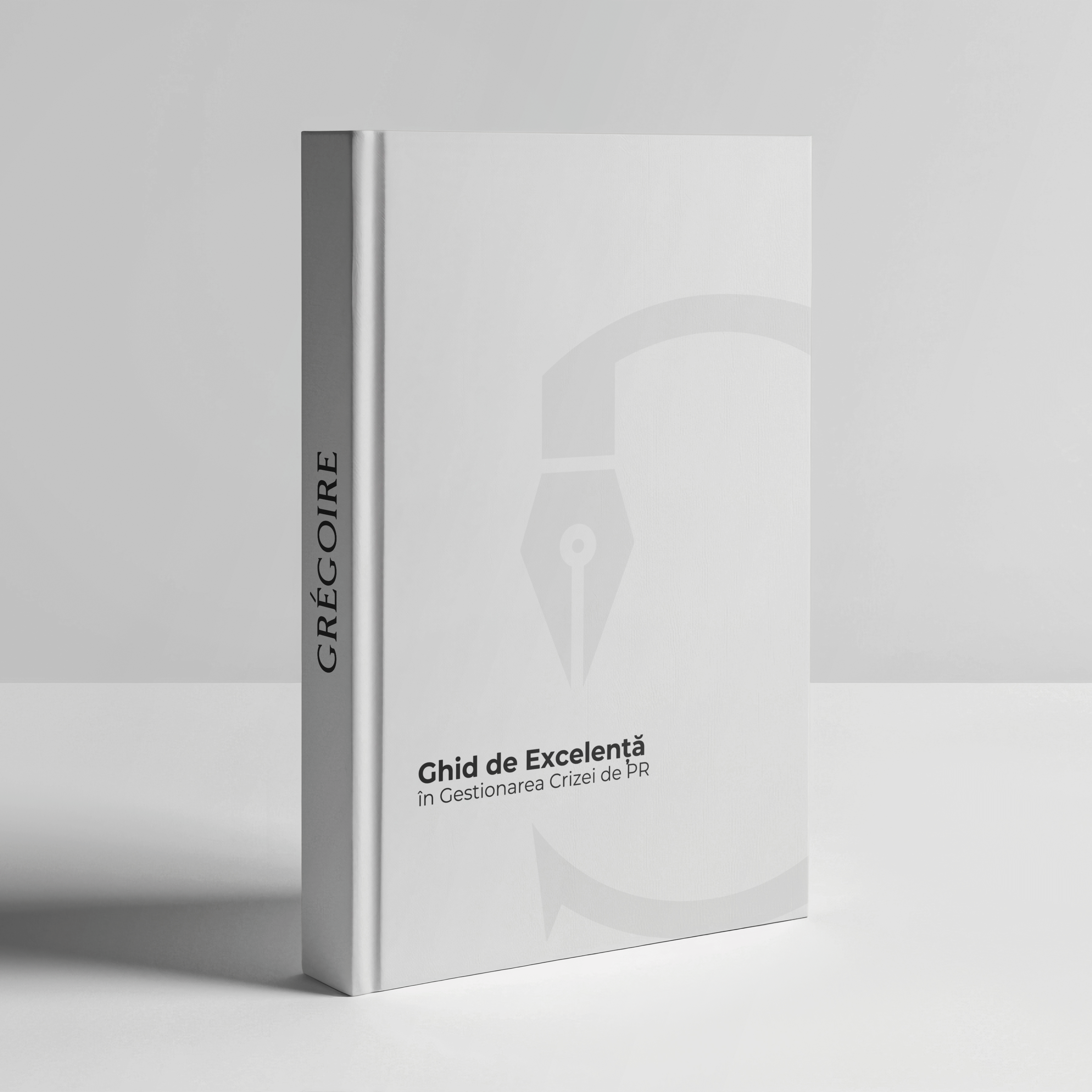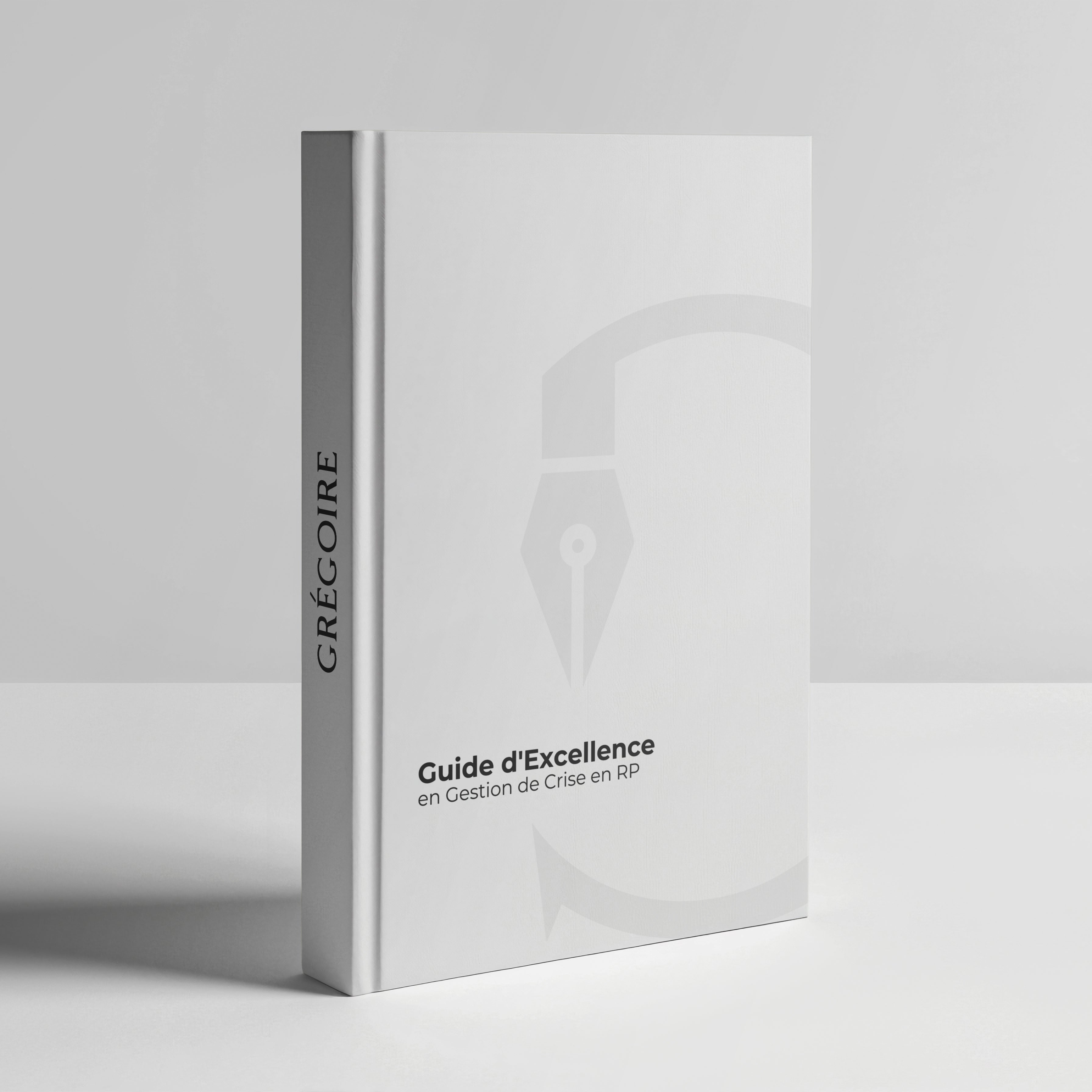Learn How to Manage
a PR Crisis.



Excellence Guide to PR Crisis Management
Tax included.
Each chapter is structured to address the specific challenges of luxury brands, equipping PR departments and management teams with the necessary skills to respond professionally and promptly. Suitable for both experienced professionals and those new to crisis management, the guide offers a strategic framework tailored to the premium market context.
Number of Pages: 64
Language: English
Content Summary
- Introduction
- Crisis Types and Their Impact on the Brand
- Initial Procedures: Identifying and Assessing the Situation
- Response Strategies Based on Crisis Severity
- Crisis Communication
- Managing Social Media Crises
- Handling Crises with Dissatisfied Customers
- Adapting Internal Communication Strategies
- Evaluating and Improving Post-Crisis Procedures
- Rebranding and Resource Reallocation
This digital guide is an essential resource for any premium brand or agency looking to be prepared to manage crises effectively, turning challenges into opportunities for growth and strengthening public trust.
Note: In accordance with Article 16, Letter m of Emergency Ordinance No. 34/2014, digital products are non-refundable after delivery and access. Additionally, the unauthorized distribution, copying, resale, or reproduction of this material is strictly prohibited and violates Law No. 8/1996 on copyright and related rights. This product is the intellectual property of GREGOIRE ENTERPRISES SRL. Any violation of these rights will result in legal liability.

Effective Strategies for a 360° Approach
What will you learn from this guide?
Evaluation and Preparation for PR Crises
Understanding the types of crises and their impact on the brand’s image is essential for an adequate and prompt response. This chapter explores different crisis typologies – from product issues and individual dissatisfaction to image scandals or ethical problems.
You will learn how to assess the severity of a crisis and quickly define a risk management strategy tailored to the specifics of each incident.
Immediate Steps for Crisis Management
In a crisis, the initial response is crucial to mitigating negative impact. This chapter covers immediate response measures, including assembling a crisis team, identifying key communication priorities, and establishing a rapid and transparent reaction protocol.
You will discover the importance of defining an appropriate tone of voice and adopting a sincere approach to build trust and effectively manage tensions caused by the crisis.
Response Strategies
Each crisis requires a specific approach, and this chapter details different response strategies based on the severity of the crisis.
For minor crises, such as individual complaints, a proactive and personalized approach is essential, while major crises - such as image scandals or ethical incidents, require special measures, which may even include a strategic recalibration of the brand’s image.
Interacting with the Public and Media During a Crisis
Clear, consistent, and authentic communication is the foundation of any crisis management strategy.
This chapter explains how to adapt messages and tone of voice across different communication channels, including social media, depending on the nature of the crisis.
You will learn how to use available communication tools to respond both publicly and personally, ensuring public perception is managed effectively and minimizing the risk of escalation.
Rebranding and Strengthening Public Trust
Depending on the severity of a crisis, rebranding may become necessary to regain public trust and restore the brand’s image in the long term.
This chapter explores when and how identity changes and internal adjustments can be crucial in transforming the negative impact of a crisis into a solid and authentic reconstruction process.
Understanding the types of crises and their impact on the brand’s image is essential for an adequate and prompt response. This chapter explores different crisis typologies – from product issues and individual dissatisfaction to image scandals or ethical problems.
You will learn how to assess the severity of a crisis and quickly define a risk management strategy tailored to the specifics of each incident.
In a crisis, the initial response is crucial to mitigating negative impact. This chapter covers immediate response measures, including assembling a crisis team, identifying key communication priorities, and establishing a rapid and transparent reaction protocol.
You will discover the importance of defining an appropriate tone of voice and adopting a sincere approach to build trust and effectively manage tensions caused by the crisis.
Each crisis requires a specific approach, and this chapter details different response strategies based on the severity of the crisis.
For minor crises, such as individual complaints, a proactive and personalized approach is essential, while major crises - such as image scandals or ethical incidents, require special measures, which may even include a strategic recalibration of the brand’s image.
Clear, consistent, and authentic communication is the foundation of any crisis management strategy.
This chapter explains how to adapt messages and tone of voice across different communication channels, including social media, depending on the nature of the crisis.
You will learn how to use available communication tools to respond both publicly and personally, ensuring public perception is managed effectively and minimizing the risk of escalation.
Depending on the severity of a crisis, rebranding may become necessary to regain public trust and restore the brand’s image in the long term.
This chapter explores when and how identity changes and internal adjustments can be crucial in transforming the negative impact of a crisis into a solid and authentic reconstruction process.
Negative feedback or signs of a crisis should never be treated superficially. Every reaction and decision in such delicate moments contributes to maintaining public trust and reinforcing an authentic and responsible brand image. Careful crisis management is not just an act of damage control, it is a demonstration of a brand’s values and integrity.

Andrei Grigorie, founder and Executive Director of GRÉGOIRE, is a 360° digital marketing expert with extensive experience in building exclusive brands and creating integrated marketing strategies.
Recognized for his innovation and impact in the industry, Andrei has been featured in the prestigious Forbes 30 Under 30 list, further cementing his position as a leading expert in holistic marketing for luxury and premium brands.
With six years of experience, he has collaborated with numerous top brands, providing them with creative, personalized, and efficient solutions tailored to both international and local market needs.
Andrei Grigorie, founder and Executive Director of GRÉGOIRE, is a 360° digital marketing expert with extensive experience in building exclusive brands and creating integrated marketing strategies.
Recognized for his innovation and impact in the industry, Andrei has been featured in the prestigious Forbes 30 Under 30 list, further cementing his position as a leading expert in holistic marketing for luxury and premium brands.
With six years of experience, he has collaborated with numerous top brands, providing them with creative, personalized, and efficient solutions tailored to both international and local market needs.

Excellence Guides
FAQ
Frequently Asked Questions
How can I use this information for my business?
The insights provided in our products are practical and applicable across various contexts, whether you're a freelancer, professional, marketing agency, or brand. Each topic is approached with a 360° perspective, offering a holistic view to help you optimize strategies and achieve measurable results.
Can I share the files with others?
All files and the information within them are the intellectual property of GREGOIRE ENTERPRISES SRL. Unauthorized distribution, copying, reselling, or reproduction of digital products is strictly prohibited and violates copyright protection laws (Law no. 8/1996). Any unauthorized use of the file will result in legal liability.
Can I return digital products?
According to Article 16, letter m of Government Emergency Ordinance no. 34/2014 on consumer rights, digital products, once delivered and accessed, cannot be returned. By opening the digital file, you confirm and understand that you waive the right of withdrawal, and the purchase is final. We do not accept returns, refunds, or exchanges for this product.
How is payment processed?
All payments for our digital products are securely processed via credit or debit card through a certified payment processor. Your data is encrypted and protected according to international security standards, ensuring 100% safe transactions.
In what format is the product delivered?
The Excellence Strategy Guide is delivered in PDF format, meaning it can be accessed on any device, including laptops, tablets, or smartphones. This format provides the flexibility to access the file anywhere and anytime, without restrictions.
Once the payment is confirmed, the digital product will be automatically sent to your e-mail address. Please check your spam folder if you do not receive the e-mail in your main inbox. Delivery is instant, allowing you to access the product immediately.
What can I do if I accidentally deleted the file?
If you accidentally deleted the file, you can send a request to contact@gregoireagency.com with your order number, and the file will be resent to the e-mail address used for the purchase within a maximum of 24 business hours.
Can I contact you if I have questions?
Whether you have questions about how the GRÉGOIRE Academy platform works or need clarification on the information provided in the digital products, we are available via e-mail at contact@gregoireagency.com.





